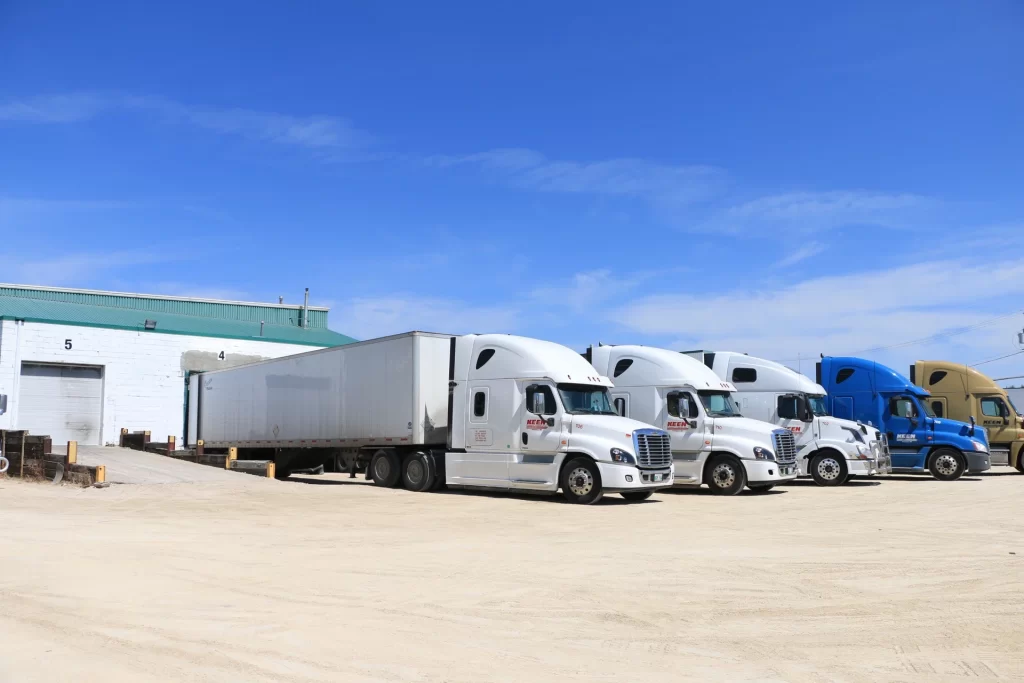At Keen Transport, we understand the critical importance of safe driving for our truck drivers. Safety isn’t just a priority; it’s ingrained in our culture. In this blog post, we delve into our commitment to safe driving and the measures we take to ensure it remains paramount.
Stay Alert
Safe driving starts with staying alert. Long hours on the road can induce fatigue, compromising reaction times. Combat this by prioritizing rest before your journey and taking regular breaks. Engage in light activity to stay alert and hydrated, avoiding heavy meals that induce drowsiness. Listen to your body and pull over if needed.
Buckle Up
Seat belts are your primary defense against injury in the event of a crash. Ensure that you and your passengers always wear seat belts properly, with the lap belt low across the hips and the shoulder belt snug across the chest. Adjust the seat and steering wheel to achieve a comfortable driving position while maintaining proper control of the vehicle. Remember, seat belts save lives, and it’s a simple habit that can make a world of difference in a collision.
Inspect Your Vehicle
Regular vehicle inspections are essential for ensuring both your safety and the reliability of your truck. Start by checking the exterior of the vehicle, including lights, mirrors, and tires. Inspect the tires for signs of wear, damage, or improper inflation, and ensure they are within the recommended pressure range. Move on to the interior and check the dashboard for any warning lights or abnormal readings. Test the brakes, steering, and transmission to ensure they’re functioning correctly. Finally, inspect the cargo and secure it properly to prevent shifting during transit.
Maintain a Safe Following Distance
Maintaining a safe following distance is critical for preventing rear-end collisions and allowing for adequate reaction time in emergencies. Follow the “three-second rule” by keeping at least three seconds of space between your truck and the vehicle in front of you. Increase this distance in adverse weather conditions or when driving at higher speeds. Use landmarks or road signs to gauge your following distance, and be prepared to adjust it as needed based on traffic flow and road conditions.
Watch Your Speed
Speeding is a leading cause of accidents, especially for large vehicles like trucks. Obey posted speed limits and adjust your speed according to road conditions, weather, and traffic flow. Reduce speed when approaching curves, ramps, or areas with reduced visibility. Remember, maintaining a safe and consistent speed not only improves fuel efficiency but also allows for better control of your vehicle and reduces the risk of accidents.
Stay Focused
Distractions behind the wheel can have disastrous consequences. Stay focused on the task of driving and minimize distractions by avoiding activities like texting, talking on the phone, or eating while driving. Keep your eyes on the road and scan the environment ahead for potential hazards. Use mirrors to check your surroundings and remain aware of other vehicles, pedestrians, and cyclists. If you need to address something urgent, find a safe place to pull over and attend to it.
Get Rest When Needed
Fatigue is a silent but significant risk factor for accidents. Recognize the signs of fatigue, such as yawning, heavy eyelids, or difficulty concentrating, and prioritize rest when needed. Pull over in a safe location and take a short nap or break to recharge. If possible, switch drivers or schedule breaks with a co-driver to ensure continuous coverage during long journeys. Remember, driving while fatigued endangers not only your own safety but also the safety of others on the road.
Plan Your Route
Proper route planning is essential for optimizing efficiency and safety during your journey. Use reliable navigation tools or GPS devices to plan your route before hand, taking into account factors like traffic patterns, road closures, and construction zones. Identify rest areas, fuel stops, and emergency services along your route and schedule breaks accordingly. Stay informed about weather forecasts and road conditions, and be prepared to adjust your route if necessary to avoid hazards or delays. By planning your route meticulously, you can minimize risks and ensure a smoother and safer journey overall.
Remember, safety should always be your top priority on the road. By following these comprehensive safety tips and exercising caution and vigilance at all times, you can help ensure a safer driving experience for yourself and others. If you have any questions or need further assistance, don’t hesitate to reach out to us at Keen Transport And Logistics INC.



